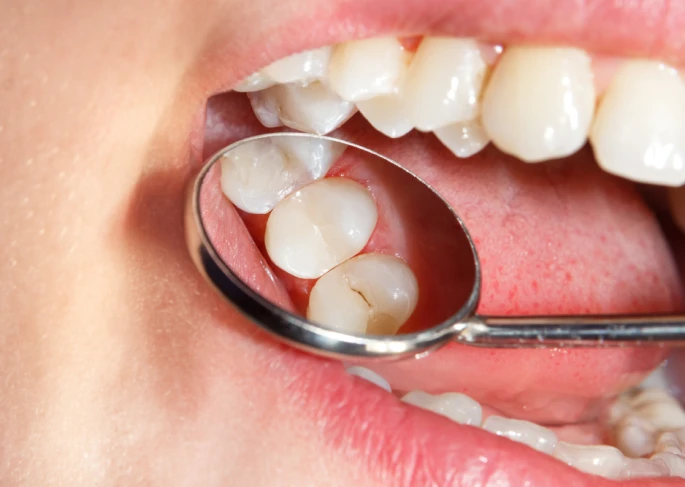ONESMILE
Fillings & Sealants
Seal away cavities before they damage your entire tooth. Our professionally trained dentists expertly fill and seal your teeth, protecting them from bacteria and food particles.

Tooth Sensitivity May Be Caused by an Untreated Cavity
It’s Time for a Filling or Sealant if..
- Visible holes or dark spots on teeth
- Discomfort when eating hot, cold, or sweet foods
- Early signs of tooth decay or damage
- Deep grooves or pits in molars that trap food.
But, What Does Filling or Sealing a Tooth Do?
- Stops cavities from progressing
- Reduces tooth sensitivity and discomfort
- Improves chewing and biting efficiency
- Shields teeth from bacteria and food particles.


OneSmile - The One Way to a Healthy Smile!
- Removing decay and thoroughly cleaning the tooth.
- Applying and shaping filling material to restore the tooth.
- Hardening the filling with a special light.
- Apply a protective sealant to the tooth surface.
Get in touch to book your
first appointment
Contact us today and our friendly team will be happy to assist you.
Our Dental Services
We enjoy debunking myths just as much as we value maintaining oral hygiene by removing dental plaque. Check out some of our services!
Frequently Asked Questions!
No, sealants are typically applied to the chewing surfaces of healthy, cavity-free teeth to prevent decay. Placing sealants on top of fillings is not a common practice and may not provide any additional benefit.
The lifespan of dental fillings can vary depending on factors such as the type of filling material used, the size and location of the filling, and your oral hygiene habits. On average, dental fillings can last anywhere from 5 to 15 years or longer with proper care and regular dental check-ups.
What kind of food should I avoid after getting sealants?
After getting sealants, it’s generally recommended to avoid sticky or hard foods that could potentially dislodge the sealants or cause damage to the teeth. Examples of foods to avoid include sticky candies, chewing gum, hard nuts, and ice cubes. Instead, stick to a soft and balanced diet to maintain oral health.
Sealants are thin protective coatings applied to the chewing surfaces of the back teeth to prevent decay, particularly in the pits and fissures where bacteria and food particles can accumulate. Fillings, on the other hand, are used to repair teeth that have been damaged by decay or trauma. They involve removing the decayed portion of the tooth and filling the cavity with a restorative material such as amalgam, composite resin, or porcelain. Sealants are a preventive measure to reduce the risk of decay, while fillings are a treatment for existing decay.